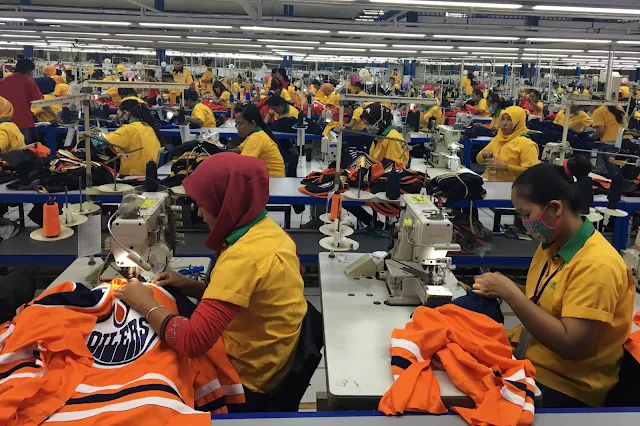The fashion industry employs millions worldwide, yet many workers face exploitative conditions—poverty wages, unsafe factories, and forced labor. As consumers demand accountability, supporting ethical fashion isn’t just a trend; it’s a movement to prioritize human dignity over profit.
This guide explores how fair labor practices define ethical fashion, how to identify brands that uphold them, and actionable steps to drive systemic change.
1. What Are Fair Labor Practices?
Fair labor practices ensure safe, equitable, and humane working conditions across the supply chain. Key principles include:
- Living Wages: Earnings that cover basic needs (food, housing, healthcare), not just minimum wages.
- Safe Workplaces: Factories with ventilation, fire exits, and protective gear.
- No Child/Forced Labor: Prohibition of underage workers or coerced overtime.
- Union Rights: Freedom to organize and advocate for better conditions.
Why It Matters: Over 80% of garment workers are women, often denied maternity leave or subjected to harassment. Ethical fashion disrupts this cycle by valuing labor as much as design.
Keyword Integration: Fair labor practices are the backbone of ethical fashion support.
2. The Hidden Costs of Fast Fashion
Fast fashion’s “race to the bottom” relies on exploiting cheap labor. Consider these realities:
- Bangladeshi Garment Workers: Earn as little as $96/month—less than 1/3 of a living wage.
- Cotton Farming: Child labor persists in Uzbekistan and India.
- Chemical Exposure: Denim sandblasting causes fatal lung diseases in Turkish workers.
Case Study: The 2013 Rana Plaza collapse (1,134 deaths) exposed systemic negligence. Survivors still fight for compensation.
Keyword Integration: Ethical consumer tips start with rejecting fast fashion exploitation.
3. Certifications to Trust
Look for third-party certifications that audit supply chains:
- Fair Trade Certified: Ensures living wages, safe conditions, and community investments.
- B Corp: Balances profit with social/environmental performance (e.g., Patagonia, Eileen Fisher).
- SA8000: Focuses on human rights, including no forced labor or discrimination.
Pro Tip: Brands like People Tree and MUD Jeans embed these standards into their DNA.
Keyword Integration: Certifications help identify sustainable fashion brands committed to fairness.
4. How to Research Brands
Greenwashing is rampant. Use these tools to dig deeper:
- Apps: Good On You rates brands on labor, environment, and animal welfare.
- Reports: Check Fashion Revolution’s Transparency Index or Clean Clothes Campaign updates.
- Brand Websites: Ethical brands detail factory locations, wage policies, and worker testimonials.
Red Flags: Vague terms like “ethically made” without evidence or factory lists.
Keyword Integration: Transparent supply chains are key to ethical fashion support.
5. Support Worker-Driven Movements
Amplify grassroots organizations fighting for labor rights:
- Asia Floor Wage Alliance: Campaigns for living wages across Asian garment hubs.
- Garment Worker Center (USA): Advocates for Los Angeles’ underpaid seamstresses.
- Fashion Revolution: Promotes #WhoMadeMyClothes to demand accountability.
Action Step: Donate or share their content to raise awareness.
Keyword Integration: Fair labor advocacy strengthens the sustainable fashion industry.
6. Buy Less, Choose Well
Reduce overconsumption by investing in quality, timeless pieces.
Strategies:
- Cost-Per-Wear Formula: A 2 per use.
- Repair & Upcycle: Extend garment life via tailoring or DIY projects.
- Secondhand Shopping: Thrifting reduces demand for new production.
Example: Swedish brand Asket labels garments with production cost breakdowns, fostering mindful buying.
Keyword Integration: Ethical consumer tips include embracing slow fashion principles.
7. Demand Policy Changes
Individual actions matter, but systemic reform requires legislation. Support:
- FABRIC Act (USA): Proposes garment worker protections and wage guarantees.
- EU Due Diligence Laws: Mandate companies address human rights risks in supply chains.
- Fashion Pact: Global CEOs pledge to eliminate forced labor by 2030.
Pro Tip: Petition local representatives or join campaigns via Remake or Labour Behind the Label.
8. Spotlight Ethical Brands Leading the Way
These brands prove ethics and aesthetics can coexist:
- Patagonia: Provides fair-trade-certified collections and funds worker wellness programs.
- Kotn: Sources Egyptian cotton directly from farmers, paying 25% above market rates.
- Nisolo: Offers healthcare and scholarships to Peruvian shoemakers.
Keyword Integration: Sustainable fashion brands like these redefine industry standards.
9. Educate Your Community
Share knowledge to inspire collective action:
- Host clothing swaps or documentary screenings (The True Cost).
- Follow educators like Aja Barber or Venetia La Manna.
- Discuss labor issues in reviews or social media posts.
Case Study: #PayUp pressured brands to pay $15 billion in canceled orders during COVID-19.
10. Stay Persistent and Patient
Ethical fashion is a journey, not a destination. Progress includes:
- Small Brands: Emerging labels may have limited transparency but genuine intent.
- Imperfect Choices: Opting for a “better” option (e.g., H&M Conscious line) still drives demand.
Keyword Integration: Ethical fashion support grows through consistent, informed choices.
Final Thoughts
Supporting ethical fashion isn’t about perfection—it’s about progress. By prioritizing fair labor practices, we honor the hands that craft our clothes and push the industry toward justice. Every purchase, share, or conversation is a stitch in the fabric of change.

